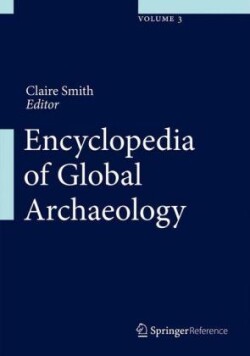Archaeology - the study of human cultures through the analysis and interpretation of artefacts and material remains - continues to captivate and engage people on a local and global level. Internationally celebrated heritage sites such as the pyramids-both Egyptian and Mayan-Lascaux caves, and the statues of Easter Island provide insights into our ancestors and their actions and motivation. But there is much more to archaeology than famous sites. Ask any archaeologist about their job and they will touch on archaeological theory, chemistry, geology, history, classical studies, museum studies, ethical practice, and survey methods, along with the analysis and interpretation of artefacts and sites. Archaeology is a much broader subject than its public image and branches into many other fields in the social and physical sciences.
This multi-volume work provides a comprehensive and systematic coverage of archaeology that is unprecedented, not only in terms of the use of multi-media, but also in terms of content. It encompasses the breadth of the subject along with key aspects that are tapped from other disciplines. It includes all time periods and regions of the world and all stages of human development. Mostly importantly, this encyclopedia includes the knowledge of leading scholars from around the world.
The entries in this encyclopedia range from succinct summaries of specific sites and the scientific aspects of archaeological enquiry to detailed discussions of archaeological concepts, theories and methods, and from investigations into the social, ethical and political dimensions of archaeological practice to biographies of leading archaeologists from throughout the world. The different forms of archaeology are explored, along with the techniques used for each and the challenges, concerns and issues that face archaeologists today.
The Encyclopedia of Global Archaeology has two outstanding innovations. The first is that scholars were able to submit entries in their own language. Over 300,000 words have been translated from French, Spanish, Portuguese, German, Italian, Japanese, Turkish and Russian. Many of these entries are by scholars who are publishing in English for the first time.
This compendium is both a print reference and an online reference work. The encyclopedia's second major innovation is that it harnesses the capabilities of an online environment, enhancing both the presentation and dissemination of information. Most particularly, the continuous updating allowed by an online environment should ensure that the Encyclopedia of Global Archaeology is a definitive reference work for archaeology and archaeologists.

















